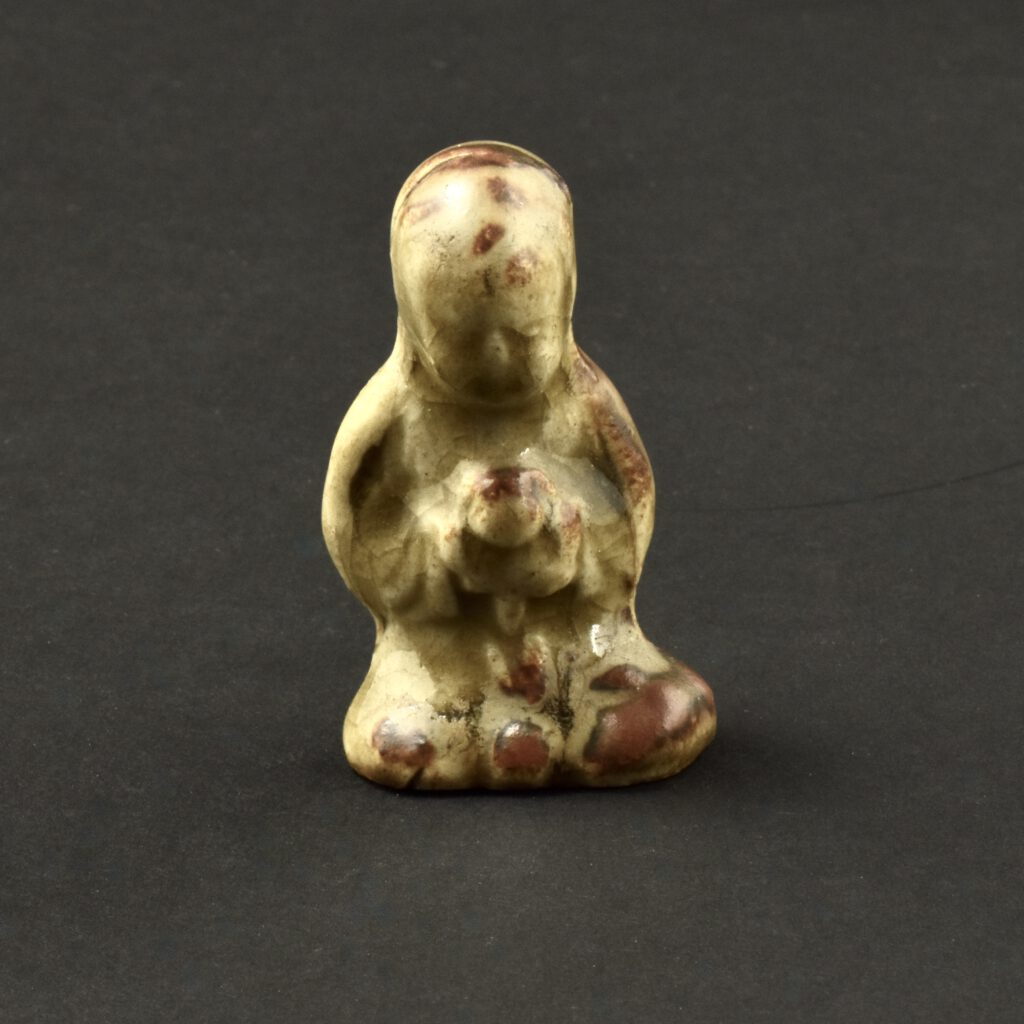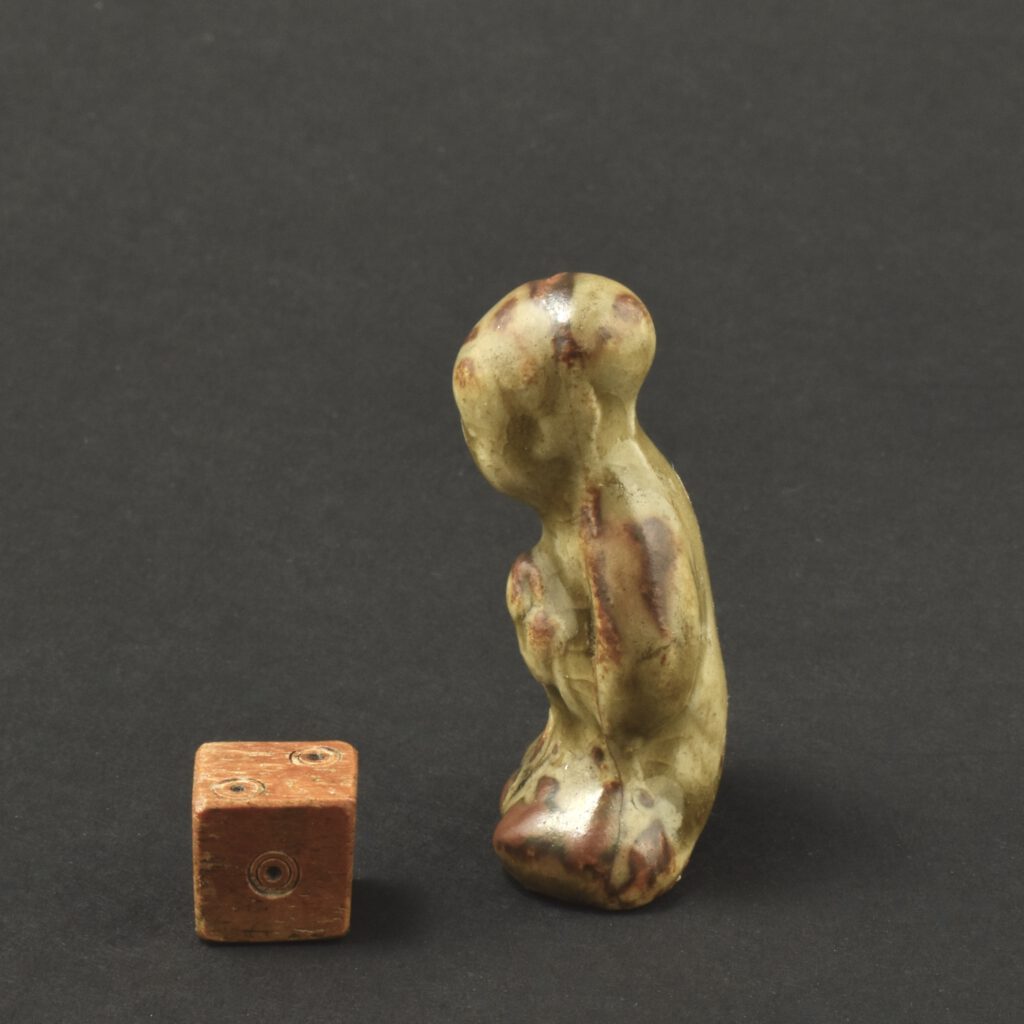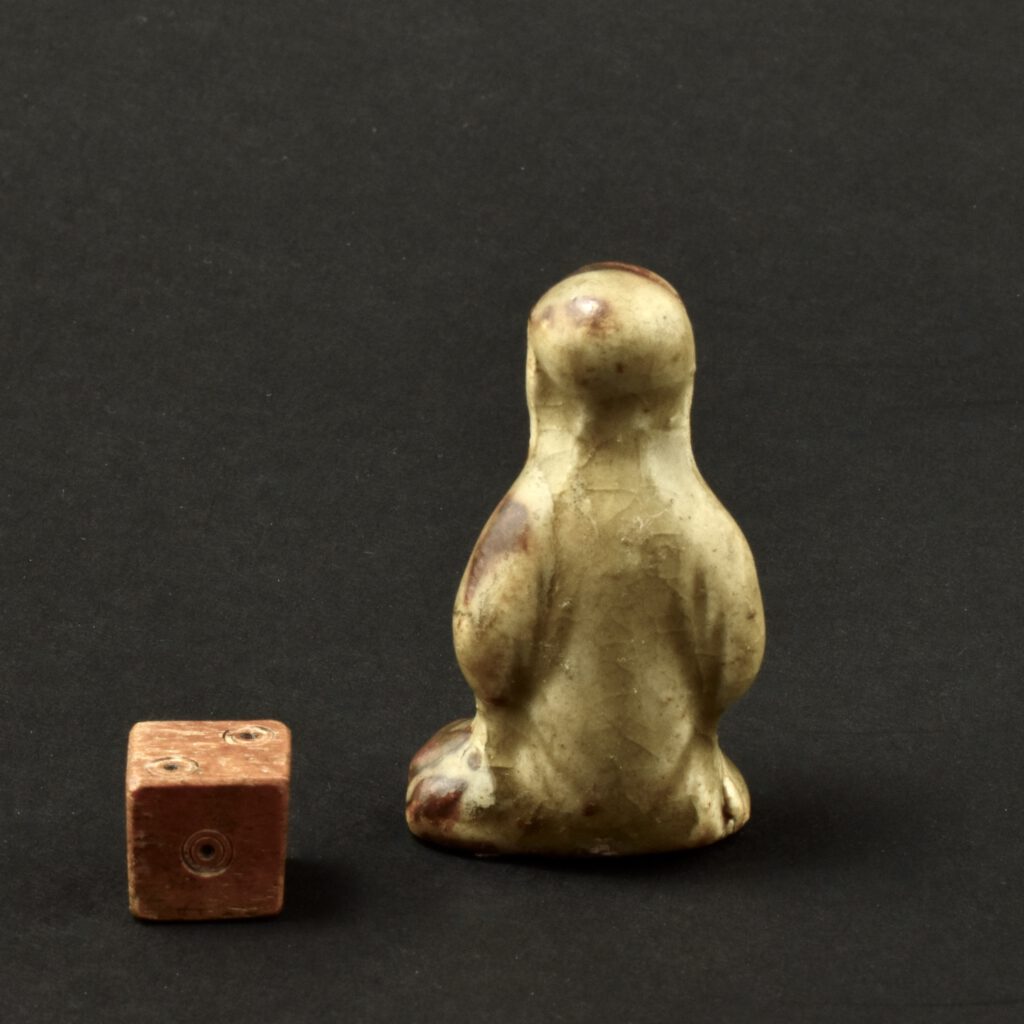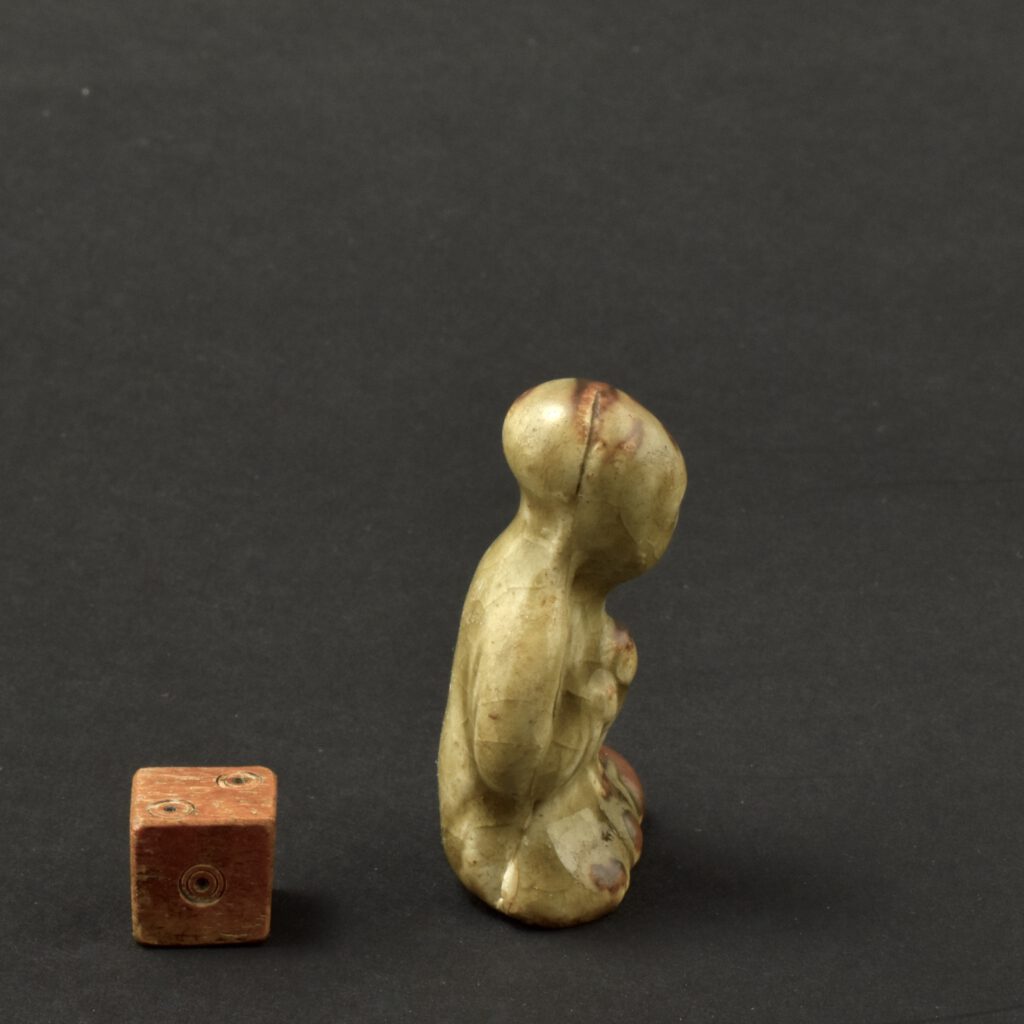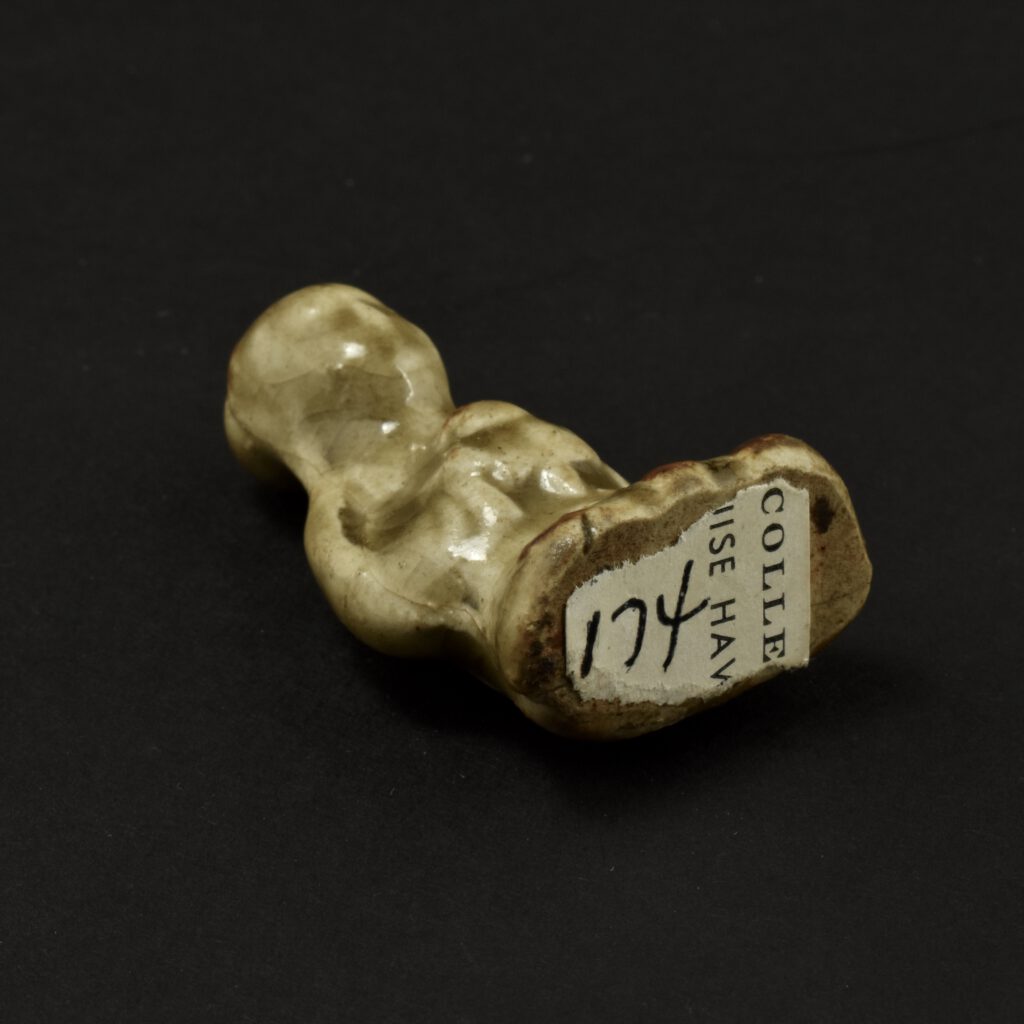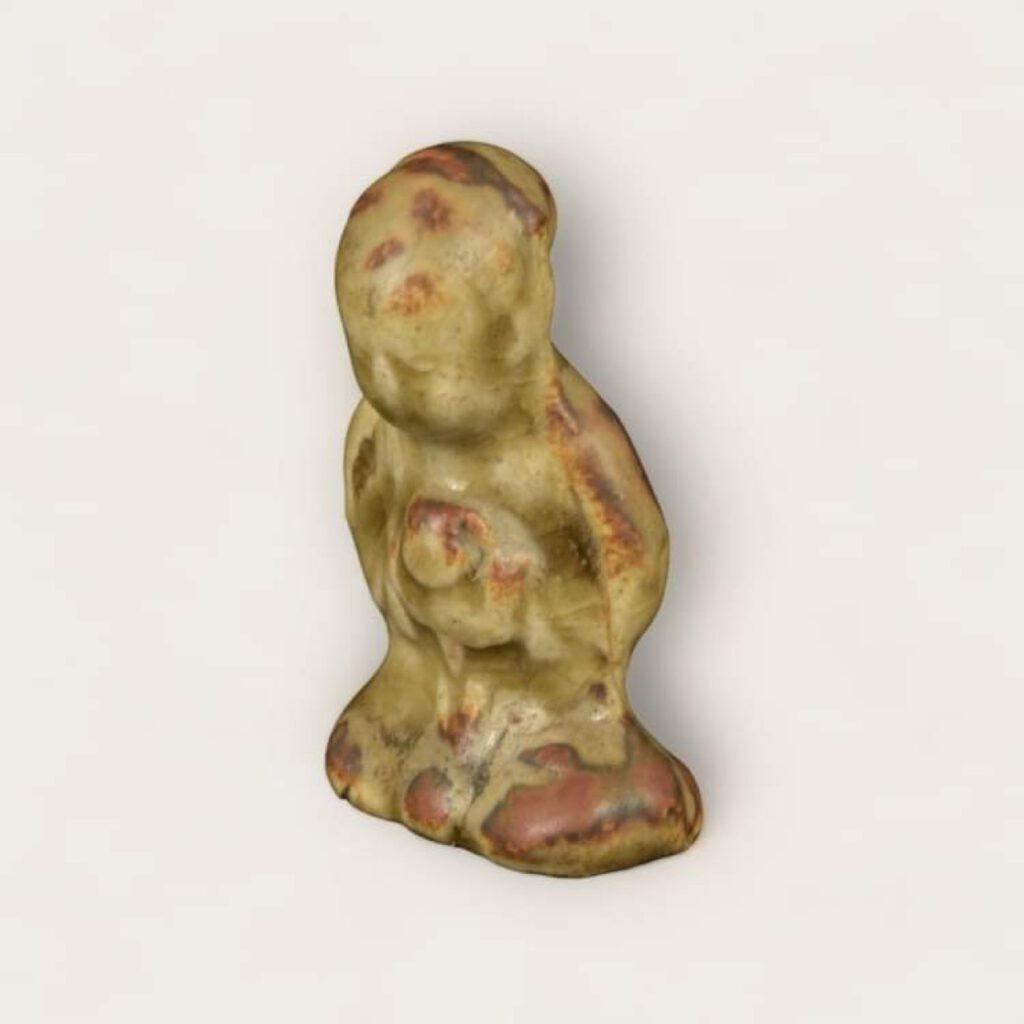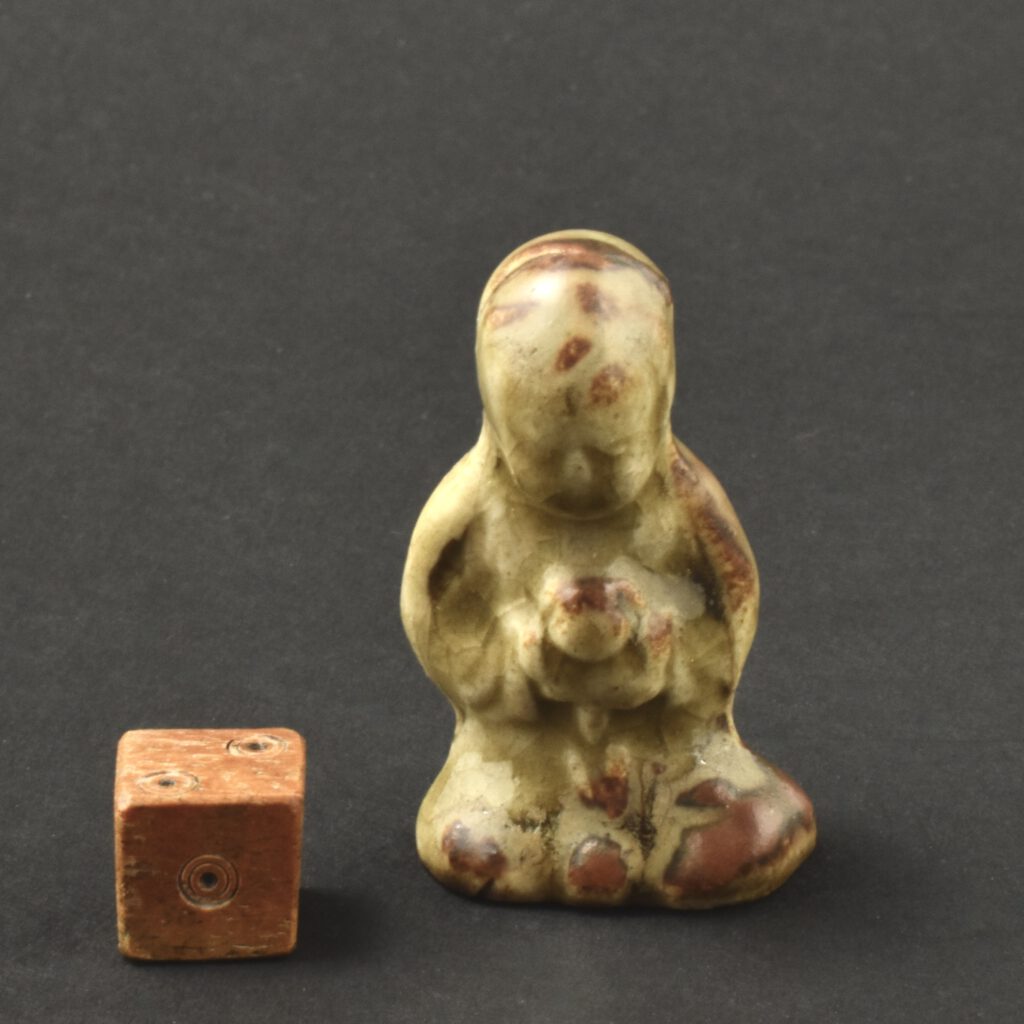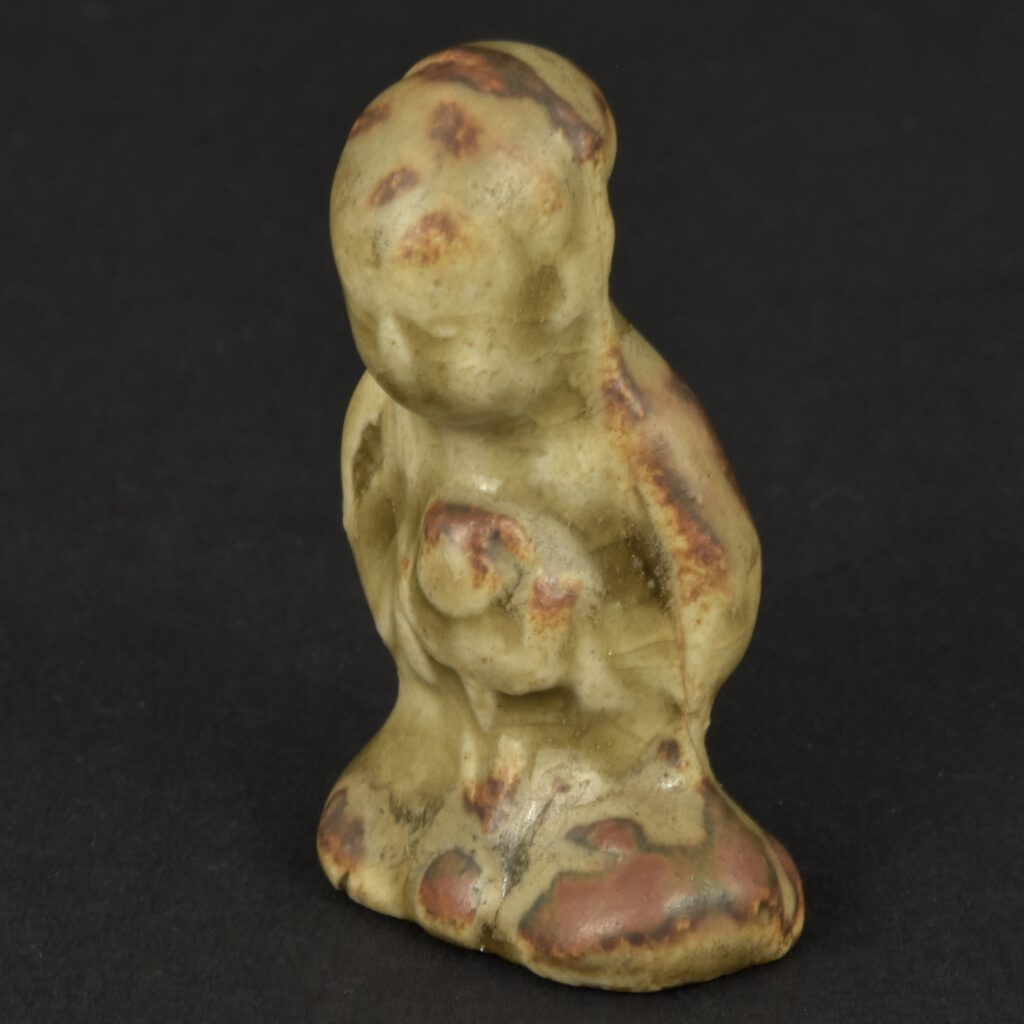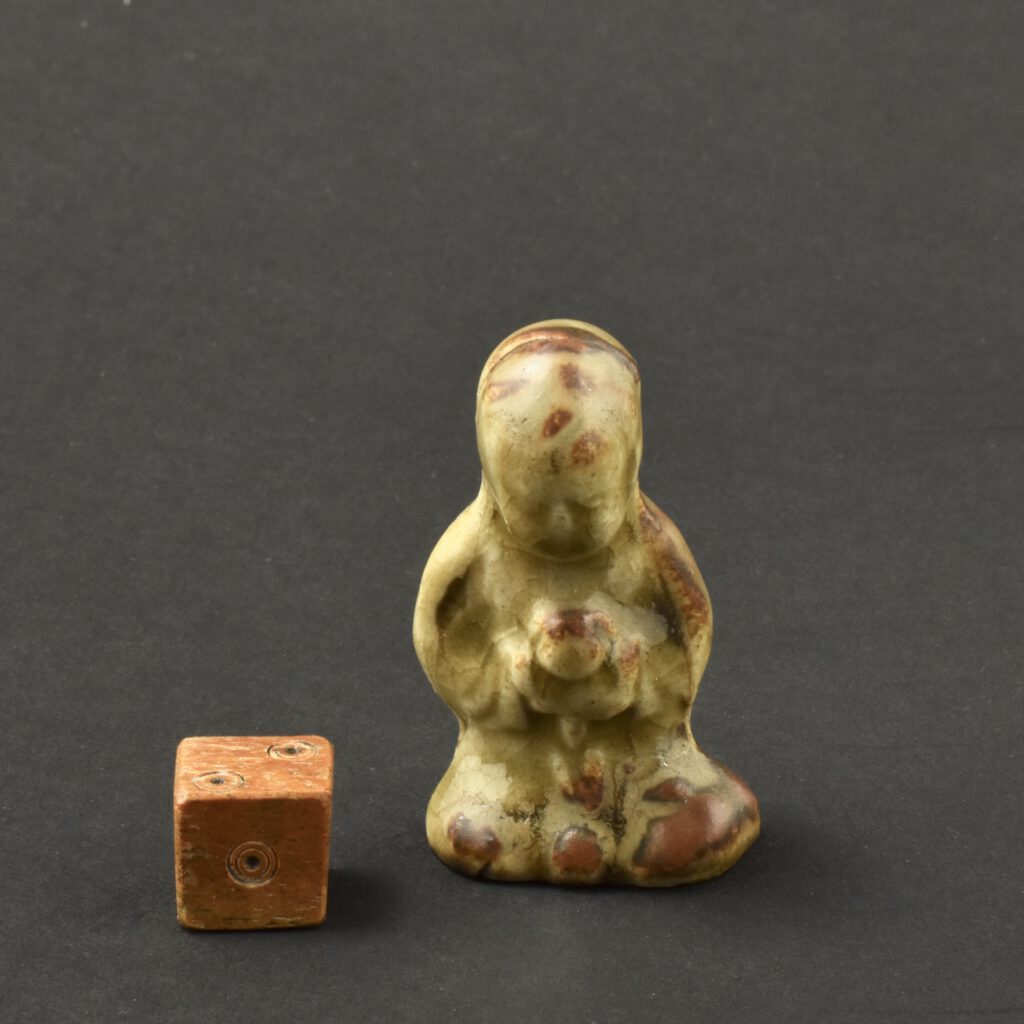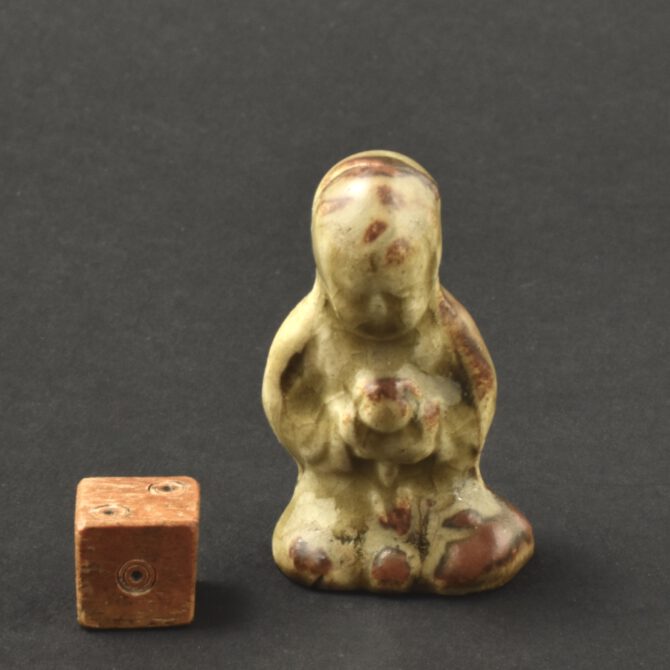
A Miniature Yaozhou Celadon Model of a Boy
A Northern Song, 960-1127, Yaozhou Kilns, Shaanxi Province. A miniature Yaozhou celadon model of a seated boy holding something in his hands. The base is flat and unglazed, the glaze has fired brown in some places. Yaozhou Celadon ware comes in many forms, but small crisply moulded or carved bowls were a popular product, as were miniature press-moulded figures or animals, toys and everyday utensils. The Yaozhou kilns main production at Shaanxi was celadon, but they also produced black and brown wares as well. Song Yaozhou glazes are rather different to both earlier and later Chinese Celadons. Later celadons from Longquan of the Yuan and Ming Dynasties have a very thick rich glaze suffused with bubbles throughout, these diffuse the light hitting the glaze, creating a very soft rich sheen. Yaozhou Celadons have a thinner glaze with smaller bubbles. Yaozhou celadons have a more obvious green than earlier wares but the thinness of the glaze means that the ceramic body is far more likely to be visible than on Longquan celadons. The colour of Yaozhou celadons tends to be more to wards olive green rather than the Longquan celadon which is normally richer and nearer a true green.
See Below For More Photographs and References.
SOLD
- Condition
- In excellent condition, very minor crazing. The luting line is visible across the top of his head.
- Size
- Height 4.6 cm (1 /3/4 inches).
- Provenance
- A Private Collection of Chinese Ceramic Miniature, label to base '174'.
- Stock number
- 26122
- References
- For a similar Northern Song figure but of a girl see : Small China, Early Chinese Miniatures : a rediscovery of a cultural phenomenon (Koos de Jong, Arnoldsche Art Publishers. ISBN 978-3-89790-631-0. 2021). Page 114, Fig.89.
Information
Small China, Early Chinese Miniatures
By Koos de Jong
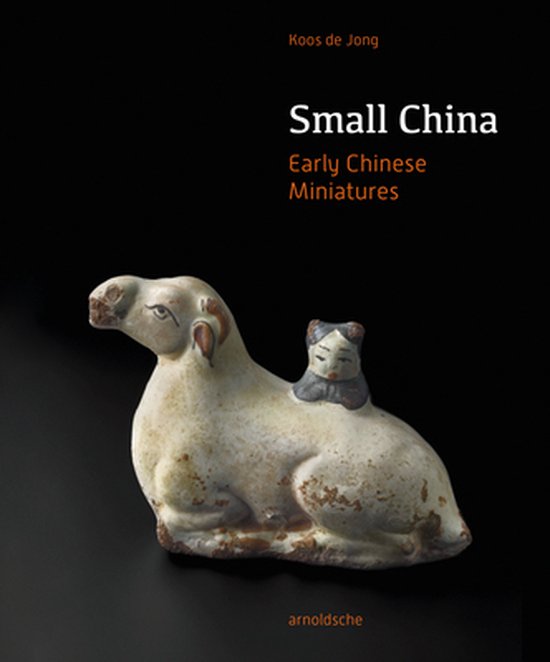
Small China presents Chinese miniatures from 5,000 BC up to the 15th century. The pocket size representations of supernatural beings, people, animals, or everyday objects are virtually uncharted in East Asian crafts – even in China, these objects in jade, bronze, ivory, and porcelain are little known. Koos de Jong explores their arcane meanings and traces their production and the market for such treasures, which, contrary to official secular and religious art, include those devoted to taboo subjects such as erotica or humour. The miniatures had many different functions, from insignia, fetishes and devotional objects to burial gifts or toys. They could express good wishes or even serve as bribes. A rare glimpse into the everyday life of ordinary people and into Chinese handicrafts from thousands of years ago.
